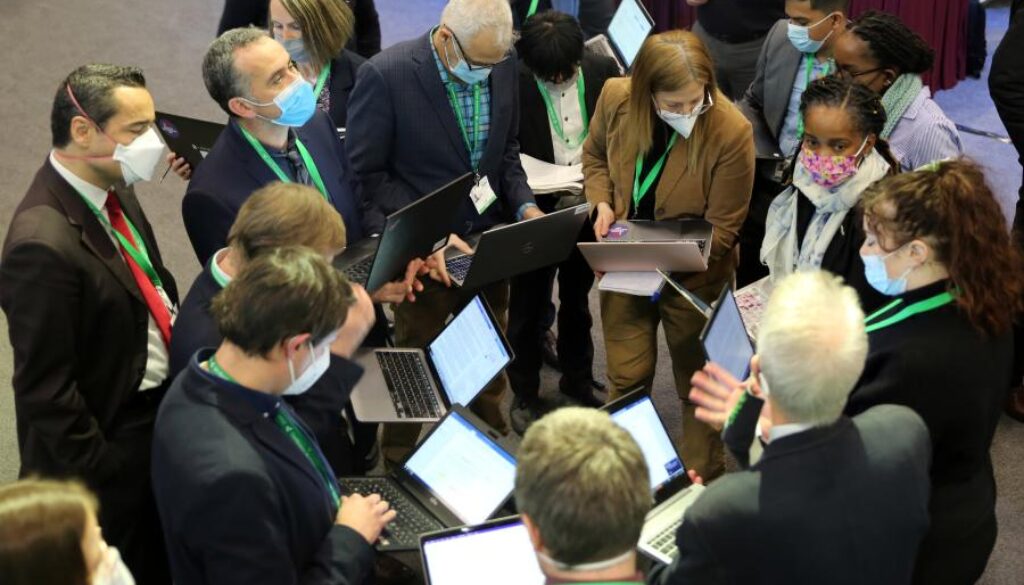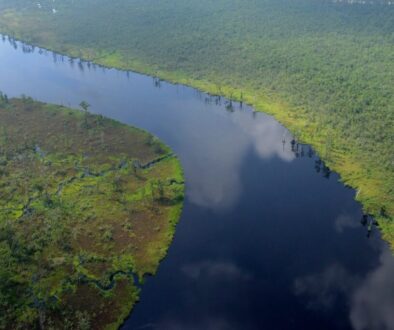After two tense weeks, world awaits COP15 plan to save Earth’s species
The clock is ticking in Montreal, Canada as representatives from over 190 countries wrap up two tense weeks of negotiations over a framework to reverse Earth’s extinction crisis. The United Nations meeting, known as COP15, is set to conclude Monday.
Clashes over how to finance the plan, among other obstacles, have led to uncertainties about the meeting’s prospects for success. However, yesterday COP15 president Huang Runqiu, China’s Minister of Ecology and Environment, announced he would release a text of the final framework on Sunday.
The convention’s timing couldn’t be more critical. Human activities such as deforestation, overfishing, and agriculture have driven an estimated one million species to the brink of extinction.
“It’s a really, really important meeting in which, in a way, the future of the planet is at stake,” said Patricia Balvanera, a professor at the Center for Ecosystem Research at the National University of Mexico.
COP15, which was postponed due to the COVID-19 pandemic, centers around finalizing the Post-2020 Global Biodiversity Framework, an ambitious document designed to steer the world towards its 2050 vision of “living in harmony with nature.” The first draft contains 21 targets to be completed by 2030, which include protecting 30% of global land and oceans (the 30×30 initiative), restoring 3 billion hectares, and halting species extinctions. The framework would replace the failed Aichi targets set in 2010 and comes on the heels of the COP27 climate change conference that took place in Sharm El-Sheikh, Egypt in November.
While the US has never ratified the Convention on Biological Diversity, the 1992 agreement on which COP15 and previous meetings are based, the US committed to a 30×30 target in 2021 and has sent representatives to Montreal.
30 x 30
Stuart Pimm, an environmental scientist at Duke University, believes COP15 negotiators will agree on a plan for protecting biodiversity. He only hopes it will be an effective one.
“The challenge is not whether they will agree, but whether those agreements will have anything that make a difference and can be measured,” he said.
Pimm feels optimistic about 30×30’s potential to help protect the planet, citing its measurable criteria and the “fantastic remote sensing that allows us to see if protected areas are, indeed, protected.”
But he also noted, “Just protecting 30% won’t do a lot for biodiversity. We need to protect the places where species live…a diversity of different places. That kind of language is going to be critical.”
“Land protection is one of the most controversial targets because there isn’t an agreement about what ‘protected’ means,” said Tierra Curry, a senior scientist at the Center for Biological Diversity who attended COP15 remotely. “You could set aside a huge chunk of ice-covered land and say that you’ve done your job, but it wouldn’t cover the key biodiversity areas.”
Indigenous leaders are also concerned about how “protected land” is defined – a matter that could pose an existential threat to their communities. Some worry that, if not negotiated with care, the target could result in Indigenous peoples being forced off their land in the name of conservation.

“The indigenous peoples’ land still holds the last remaining habitats for a lot of species,” said Binbin Li, an assistant professor of environmental science Duke Kunshan University in China who attended COP15. “[A lot of countries and parties from developing worlds] believe indigenous people’s land is already a kind of protected area.”
“Is there going to be any language in there that there has to be some degree of consultation with indigenous peoples, or even local communities, before governments sort of use eminent domain to set aside that land?” wondered Pamela Chasek, a political scientist at Manhattan College and executive editor of a bulletin produced by the International Institute for Sustainable Development (IISD).
Chasek said indigenous leaders have been involved with the Convention on Biological Diversity “from the beginning” and that “their voices are heard at meetings and they play a really important role.”
In a statement released in March, the human rights organization Survival International issued a statement calling 30 x 30 “the biggest land grab in history.”
“Instead of fighting the real causes of environmental destruction and tackling those most responsible: growing overconsumption and exploitation of resources for profit led by the Global North, it is Indigenous people who will bear the brunt of these measures,” the statement read.
Amnesty International issued a statement on Thursday saying: “Any 30 x 30 deal being negotiated in the final days of COP15 must recognize that conservation is more effective on Indigenous lands than in state-run protected areas.”
Financial sticking point
Prior to COP15, 112 countries had already declared support for the 30 x 30 target. But other COP15 targets have been met with extensive disagreement between parties.
“You have some countries proposing to eliminate plastic pollution, you have some proposing to reduce it,” said Curry. “All of the targets are like that – the extinction goals, the land protection goals. There’s just not the same level of ambition across countries…and everyone has to agree on the final text.”
The matter of how to finance the global biodiversity framework in question has been one of COP15’s most contentious issues.
“We’re in a ‘chicken or egg’ situation,” said Chasek, who led a COP15 side event. “Which comes first, the money or the goals and targets?” Chasek explained that the developed countries have pressed to agree on goals before focusing on finance. In turn, the developing countries have opposed agreeing on goals until the wealthier nations commit more funding, citing concerns about making out-of-reach commitments.
Chasek expressed concerns that the new biodiversity fund many developing countries are calling for may not be successful if it is restricted to money from developed countries alone.
“If they opened it up to a wider source of donors – private sector, philanthropies, some developing countries in a position to contribute to the fund – more money might be forthcoming,” said Chasek.
On Wednesday, as negotiations on how to fund the framework stalled, representatives from developing countries walked out of the conference.
“A lot of us got really worried,” said Li.
Over the weekend, ministers continue to negotiate on how future funding to support biodiversity actions should be structured.
Access and benefit sharing
COP15 representatives are also tackling the hot-button issue of how to share the benefits of digitally-stored genetic resources (called digital sequence information or DSI) with the countries from which these resources originally came. A pharmaceutical company, for example, may use genetic information from a tropical plant to develop a medicine that treats a disease. The 2010 Nagoya Protocol set up a system in which benefits from that medicine are shared with the plant’s country of origin.
But free digital access to organisms’ genetic codes has created a wrinkle in that mechanism. Since it would be highly inefficient or even impossible to track and trace all DSI, visions for a DSI benefit-sharing system would look more like a fund for global biodiversity conservation in general, with less direct links to countries of origin.

“The fear is that this whole notion of access and benefit sharing and the compensation of developing countries for their knowledge and resources is going to become obsolete due to advances in science and technology,” said Chasek. “Developing countries for years have been exploited, and this notion of access and benefits sharing under the [Convention on Biological Diversity] was supposed to finally give them some compensation.”
On Saturday, ministers from Chile and Norway announced a DSI proposal for a multilateral benefit-sharing mechanism that would include provisions respecting existing agreements between countries.
“Hopefully something bold, ambitious, and with funding will come out of [COP15],” said Curry. “A mediocre agreement is going backwards.”
(Featured Photo: Delegates at COP15 during a Working Group II session. Photo by IISD/ENB Mike Muzurakis.)
 EWG
EWG


